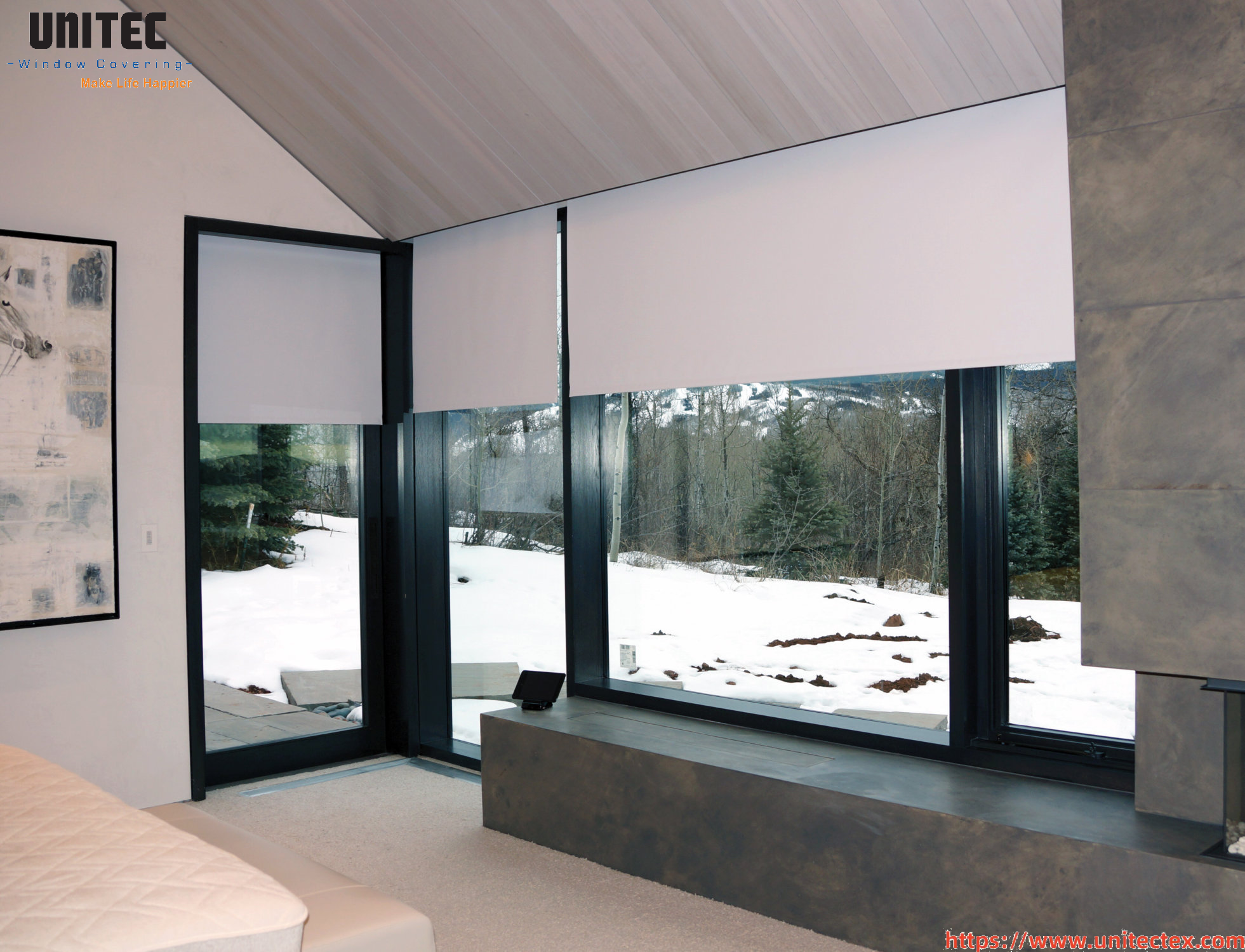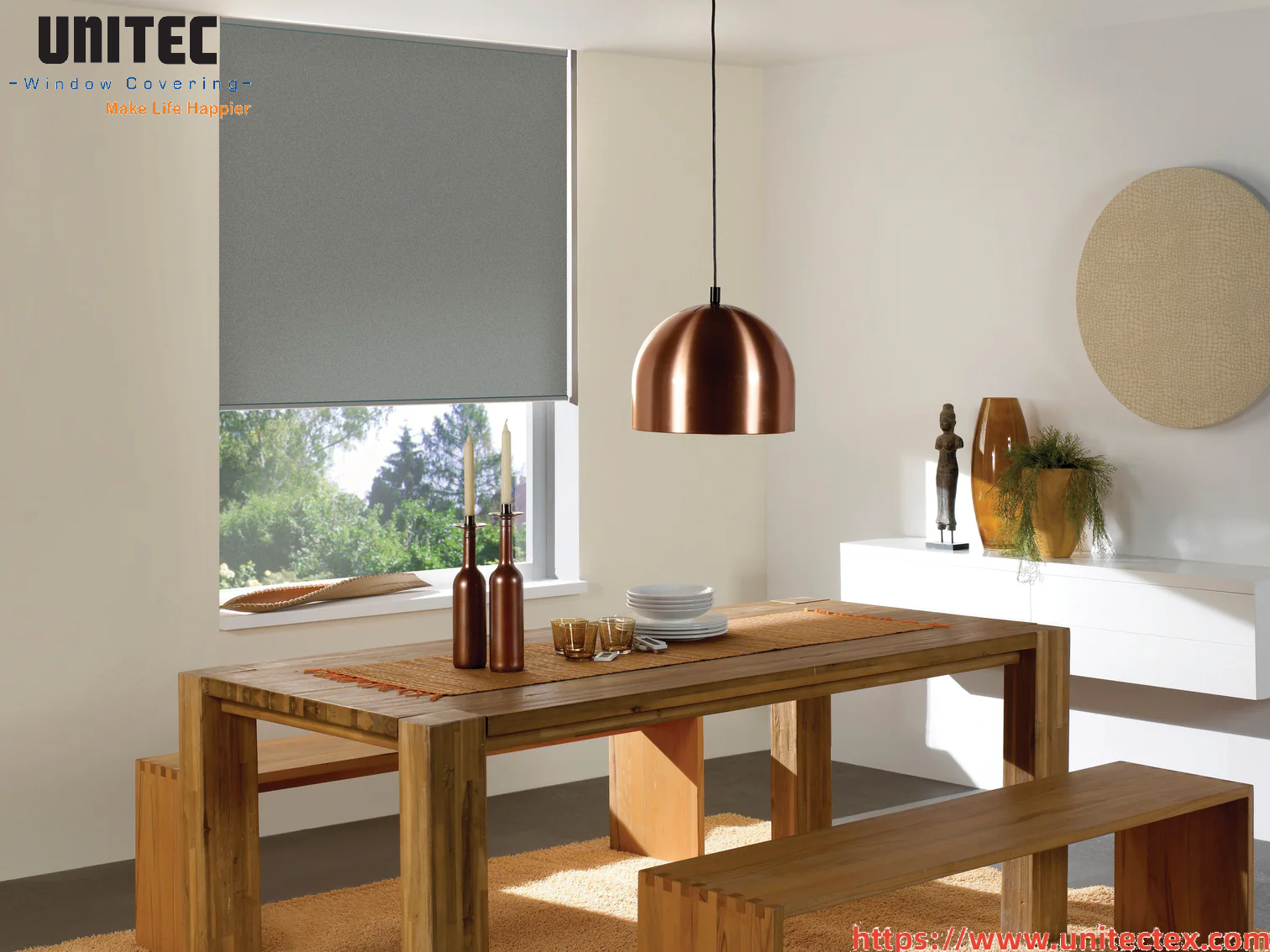
What Are Commercial Blackout Roller Shades?
Commercial blackout roller shades are specialized window coverings engineered to block out external light completely. They are constructed using durable, opaque materials—often layered with acrylic or vinyl coatings—that prevent light penetration. Unlike standard shades, commercial-grade versions are built to withstand frequent use, larger window spans, and higher traffic environments. They are typically operated via manual chain mechanisms, motorized systems, or spring-assisted pulls, depending on the application.
What sets them apart is their ability to cater to specific commercial needs, such as:
- Large-scale dimensions: Designed for storefronts, conference rooms, and floor-to-ceiling windows.
- Enhanced durability: Made from reinforced fabrics resistant to wear, fading, and damage.
- Customization: Options include fire-retardant materials, motorization for hard-to-reach windows, and specialized mounting systems.
Why Commercial Spaces Need Blackout Roller Shades
- Optimized Environment for Productivity and Focus
In offices, conference rooms, and training areas, uncontrolled glare on screens can disrupt workflows and cause eye strain. Blackout shades create a glare-free environment, improving concentration and productivity. For spaces requiring presentations or video conferences, these shades ensure optimal lighting conditions. - Energy Efficiency and Cost Savings
Commercial buildings are often plagued by high energy costs due to heat gain in summer and heat loss in winter. Blackout roller shades act as insulating barriers, reducing the load on HVAC systems. Studies show that window treatments can lower energy consumption by up to 25%, making them a sustainable investment. - Privacy and Security
From corporate boardrooms to medical facilities, privacy is non-negotiable. These shades prevent outsiders from viewing sensitive information or activities. In retail spaces, they can be used after hours to conceal inventory and enhance security. - UV Protection and Asset Preservation
Sunlight exposure can fade furniture, flooring, electronics, and merchandise. Commercial blackout shades block 100% of UV rays, protecting assets and reducing long-term maintenance costs.

Key Features of Top-Tier Commercial Blackout Shades
- Durability: Commercial-grade fabrics are tested for tensile strength and cycle resistance (frequent raising/lowering).
- Motorization Options: Automated shades integrate with building management systems for scheduled operation (e.g., closing at sunset).
- Safety Compliance: Mechanisms like tensioned chains or cordless designs meet commercial safety standards.
- Customization: Brands offer variations in opacity, color, and acoustics (sound-dampening properties).
- Warranty: Commercial products often come with extended warranties covering mechanisms and fabrics.
Choosing the Right Commercial Blackout Shade
- Assess Your Needs
Identify the primary purpose: Is it light control, energy savings, privacy, or aesthetics? For example, a restaurant might prioritize ambiance, while a laboratory requires precise light elimination. - Material Selection
- Vinyl-backed fabrics: Ideal for moisture-prone areas like spas or kitchens.
- Flame-retardant materials: Necessary for public venues like theaters or airports.
- Acoustically enhanced fabrics: Reduce noise pollution in open-plan offices.
- Operation Mechanisms
- Manual chains: Cost-effective for low-height windows.
- Motorized systems: Essential for large or hard-to-reach windows. They can be controlled via remotes, wall switches, or smart integrations (e.g., IoT sensors).
Trends in Commercial Blackout Solutions
- Smart Automation: Shades synced with circadian lighting systems to regulate natural light exposure and improve occupant well-being.
- Sustainable Materials: Recycled fabrics and eco-friendly coatings align with corporate sustainability goals.
- Custom Branding: Shades printed with company logos or patterns for branded interiors.
- Multi-functional Designs: Shades combining blackout capabilities with solar protection or insulation.
For more information about curtains, please follow us and contact us
Post time: Sep-12-2025




